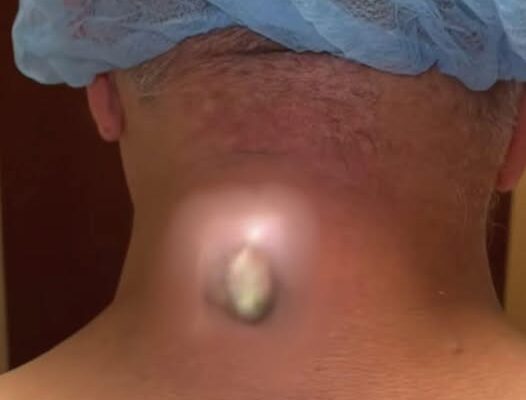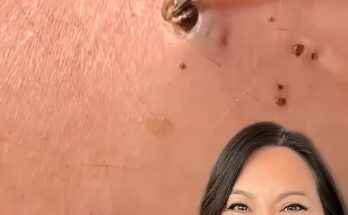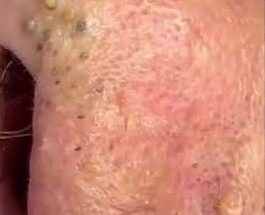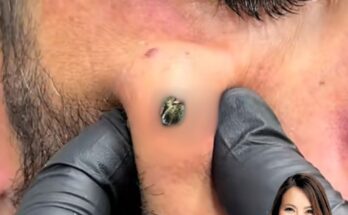While many treatments exist to help reduce breakouts and improve skin texture, one technique that has gained attention in recent years is microneedling.
Sometimes called collagen induction therapy, microneedling is a minimally invasive cosmetic procedure designed to encourage the skin’s natural renewal process.
Microneedling has become especially popular among individuals who want to improve the appearance of acne scars or uneven skin tone. The treatment is performed by professionals in skincare clinics or dermatology offices and is valued for its ability to help refresh the skin without relying on harsh chemicals or invasive surgery.
Understanding How Microneedling Works
Microneedling involves the use of a device fitted with very fine, sterile needles. These tiny needles create microscopic punctures in the top layer of the skin. While that might sound intimidating at first, the controlled micro-injuries actually serve an important purpose. They prompt the body’s natural healing response, stimulating the production of collagen and elastin — two essential proteins that help keep skin firm, smooth, and resilient. Collagen plays a central role in how our skin looks and feels. Over time, collagen production naturally decreases, which can make scars and fine lines more noticeable. By encouraging collagen renewal, microneedling can help reduce the appearance of certain types of acne scars and improve overall skin texture. It does not eliminate acne itself, but it can complement other skincare approaches by helping to smooth and refine the skin’s surface.
What to Expect During a Microneedling Session
Before the treatment begins, a skincare professional usually applies a topical numbing cream to help keep the experience comfortable. Once the skin is prepared, the microneedling device is gently moved across the targeted area. The entire session typically takes between thirty minutes and an hour, depending on the size of the treatment area. Immediately after microneedling, it is normal for the skin to look slightly pink or feel sensitive — similar to a mild sunburn. Most people notice that this sensation fades within a day or two. Professionals often recommend avoiding direct sunlight and using gentle skincare products while the skin recovers. Hydration and sun protection are key, as the skin is temporarily more sensitive. As the skin heals, many individuals begin to notice gradual improvements in smoothness and tone over the following weeks. Because microneedling works by stimulating natural processes, the results develop over time, and multiple sessions are often recommended for best outcomes.

Acne scars can take many forms — from shallow surface marks to deeper indentations — and they can have a lasting effect on a person’s confidence. Microneedling is considered a versatile option because it can address different types of scars, including rolling and boxcar scars. Many people appreciate microneedling for its balance of effectiveness and minimal downtime. Unlike more aggressive treatments that can require extended recovery, microneedling typically allows individuals to resume normal activities fairly quickly. This has helped make it an appealing option for those with busy lifestyles who still want to invest in their skin’s long-term health and appearance. Because the treatment uses the body’s natural healing response, it is also suitable for a wide range of skin types and tones. However, it is important to consult with a qualified skincare professional before starting any new procedure. A trained provider can evaluate the skin’s condition, discuss expectations, and create a plan that fits each person’s specific goals.
In some cases, skincare professionals may recommend combining microneedling with other treatments or products to enhance results. For example, serums containing hyaluronic acid, peptides, or vitamins are sometimes applied immediately after microneedling to help support hydration and skin renewal. Since the skin is more receptive at this stage, these beneficial ingredients can be absorbed more effectively. It’s important to remember that microneedling is not a one-size-fits-all solution. The number of sessions, spacing between treatments, and choice of complementary products can vary based on individual skin needs and goals. Many people notice visible changes after just a few sessions, while others may benefit from a longer treatment plan designed by their skincare professional.
When performed by trained professionals using sterile equipment, microneedling is generally considered a safe and well-tolerated procedure. However, because it involves creating small punctures in the skin, it should not be done at home without proper guidance. Over-the-counter rollers or do-it-yourself kits may seem convenient, but they do not offer the precision or hygiene standards of professional-grade devices. Improper use can increase the risk of irritation or infection. For individuals with active acne, certain skin conditions, or ongoing inflammation, a professional consultation is especially important. A licensed dermatologist or aesthetic specialist can determine the most appropriate timing and approach to ensure the skin is in the best condition for microneedling.
After microneedling, simple but consistent aftercare helps maintain results. Gentle cleansing, hydration, and sun protection are essential during the recovery phase. Avoiding harsh exfoliants, retinoids, or alcohol-based toners for a few days allows the skin to recover comfortably. Over the long term, maintaining a healthy skincare routine can complement the effects of microneedling. This includes staying hydrated, following a balanced diet, and protecting the skin from UV exposure. Regular professional treatments spaced several weeks apart may help sustain collagen production and support smoother, firmer-looking skin.
Beyond physical results, many people report feeling more confident after seeing the improvements microneedling brings to their complexion. Acne scars can sometimes serve as a reminder of past breakouts and may affect self-esteem. By promoting smoother, more even skin, microneedling can help people feel more comfortable and positive about their appearance. While every person’s skin responds differently, and outcomes can vary, the treatment’s growing popularity reflects how it has helped many individuals achieve a refreshed and revitalized look.
Microneedling is a sophisticated procedure that blends science and artistry. The best outcomes often come from working with professionals who understand skin biology, needle depth adjustments, and safety protocols. Choosing a qualified provider ensures that the treatment is performed with precision and care. Many clinics today offer personalized consultations where clients can ask questions, discuss concerns, and explore whether microneedling fits their skin goals. During these discussions, it is important to have realistic expectations. Microneedling can significantly improve the appearance of scars and texture irregularities, but results develop gradually and depend on each person’s unique skin characteristics.
Microneedling represents a thoughtful approach to skin rejuvenation — one that encourages the body’s own ability to renew itself. For those seeking to minimize acne scars or simply enhance overall skin texture, it offers a balance between natural stimulation and professional care. Whether it is part of a larger skincare plan or a standalone treatment, microneedling continues to attract attention for its ability to help people feel more confident in their skin. With proper guidance, realistic expectations, and consistent care, it can be a rewarding step on the journey to smoother, healthier-looking skin.



